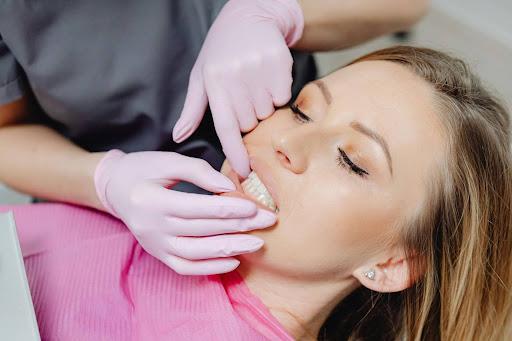
Braces used to be something you associated with your school years — awkward smiles and metal brackets. But that idea is long outdated. These days, more adults than ever are choosing to straighten their teeth and boost their confidence with orthodontic treatment.
The Australian Society of Orthodontists (ASO) reports that one in four orthodontic patients in Australia is now an adult. That’s proof that investing in your smile is never too late.
If you’ve been considering improving your dental alignment, now’s the time to explore adult orthodontic options that suit your lifestyle and age. In this article, we’ll look at why adults are turning to orthodontics, bust a few common myths, and break down the pros, cons, and choices available to you.
Why Adults Postpone Orthodontic Treatment
Common Misconceptions
Most adults choose not to undergo orthodontic treatment because of outdated beliefs. The belief that orthodontic treatment is only suitable for young people remains widespread. The ASO shows a significant increase in adult patients which proves this misconception wrong. Orthodontics provides benefits that extend beyond tooth alignment because it enhances both functional capabilities and oral wellness and self-assurance for patients of all ages.
The belief that orthodontic treatment exists solely for cosmetic purposes remains a widespread misconception. The treatment provides both aesthetic benefits and functional improvements by correcting bite alignment and reducing tooth wear and improving oral hygiene to prevent gum disease and tooth decay.
People believe orthodontic treatment requires an extended period of time. Adults can now finish their orthodontic treatment in 12 months because of Invisalign technology and accelerated treatment plans.
Barriers Adults Face
Life demands attention from everyone. The high cost of treatment stands as the main concern for many patients although some private health insurance plans provide limited coverage. The fear of professional image damage leads some people to avoid wearing visible braces when they meet clients or present their work. People face the challenge of scheduling appointments between their responsibilities as parents and workers and other daily commitments.
The current orthodontic solutions provide flexible and discreet options that match the needs of adult lifestyles better than previous solutions.
Orthodontic Options for Adults
There’s no one-size-fits-all solution. The right treatment depends on your goals, budget, and lifestyle. Here are some popular options:
Invisalign (Clear Aligners)
These virtually invisible trays are custom-fitted to gently shift your teeth over time. They’re removable, making them ideal for busy adults who want flexibility — whether for meetings, events, or simply enjoying meals without restrictions.
Pros: Discreet, comfortable, removable, minimal disruption to daily life.
Best For: Mild to moderate misalignment.
Ceramic Braces
These function like traditional metal braces but use tooth-coloured or clear brackets, making them less noticeable.
Pros: Blends with natural teeth, effective for various issues.
Considerations: More delicate than metal braces, may require more care.
Lingual Braces
Placed behind the teeth, lingual braces are completely hidden from view. They provide powerful results without compromising your appearance.
Pros: Invisible from the front, effective for complex cases.
Considerations: Higher cost may take longer to adjust.
Traditional Metal Braces
The tried-and-tested option. These are highly effective for all levels of misalignment, especially complex cases.
Pros: Reliable, often the most affordable.
Considerations: Visible but increasingly accepted by adult patients.
| Treatment Type | Visibility | Cost Range | Typical Duration | Ideal For |
| Invisalign | Very low | Medium–High | 12–18 months | Mild–moderate issues |
| Ceramic Braces | Low | Medium | 18–24 months | Moderate–complex cases |
| Lingual Braces | Invisible | High | 18–30 months | Aesthetic-conscious patients |
| Metal Braces | Visible | Low–Medium | 18–24 months | All cases, including complex |
What to Expect During Adult Treatment
Duration & Stages
Adult orthodontics typically takes between 12 to 24 months, depending on your case complexity. After your braces or aligners come off, a retention phase (usually involving retainers) ensures your teeth stay in place long-term.
Comfort and Adjustments
Mild discomfort is normal after adjustments, but it usually eases within a few days. Soft foods, wax, and saltwater rinses can help. Good oral hygiene is vital — especially around brackets or under aligners — to prevent plaque buildup and maintain gum health.
Benefits of Braces After 30

Orthodontics isn’t just about appearance — though the confidence boost is undeniable.
- Improved Oral Health: Straighter teeth are easier to clean, reducing the risk of decay and gum problems.
- Better Function: Correcting bite issues can alleviate jaw pain, reduce wear on teeth, and even improve speech or chewing.
- Long-Term Savings: Addressing problems early can prevent costly dental work down the line.
- Confidence Boost: A straighter smile often leads to better self-esteem — personally and professionally.
Are There Any Drawbacks?
Adult treatment may come with a few considerations:
- Mild Discomfort: Especially during early stages or after adjustments.
- Oral Health Prerequisites: Existing issues like bone loss or missing teeth may affect treatment choices — but solutions still exist.
- Cost: Not all treatments are fully covered by insurance. It’s worth checking your policy or discussing payment plans.
Expert Insight
The ASO emphasises that adult orthodontics is both effective and increasingly common. Modern techniques allow for efficient, predictable results at any age. In fact, many adults who missed out on treatment earlier in life now report significant improvements in comfort, oral function, and self-confidence.
A study published in the Australian Dental Journal supports this, finding that adult orthodontic patients experience not only aesthetic improvements but psychosocial benefits as well.
Too Late? Absolutely Not
There’s no age limit on improving your smile. Many adults begin treatment in their 30s, 40s, or beyond — some even start alongside their children, turning it into a family journey.
Take Sarah, 42, from Melbourne: “I always thought braces were only for teens, but my crooked teeth were affecting my bite and confidence. I finally went for Invisalign, and the difference after just 8 months was incredible — I wish I’d done it sooner.”
If you’ve been holding back, now might be the perfect time to explore adult orthodontic options that suit your lifestyle and age.
FAQs
Is 40 too old for Invisalign?
Not at all. Invisalign is suitable for adults of all ages, as long as your oral health is in good shape.
Will I need teeth removed?
Only in some cases where space is an issue. Your orthodontist will advise during the assessment.
Does adult treatment take longer?
Sometimes slightly, due to slower bone movement, but with today’s technology, results are still timely.
Can I get braces if I have crowns or implants?
Yes — options can be tailored around existing dental work.
Are the results as good as in teens?
Absolutely. With proper care and retention, adult patients achieve excellent outcomes.
Final Thoughts
Straightening your teeth after 30 isn’t just possible — it’s smart. Whether for health, comfort, or confidence, adult orthodontics offers long-term benefits that extend far beyond the mirror.
Don’t let age hold you back from the smile you’ve always wanted. Speak to an orthodontic specialist and explore a personalised plan for your goals and lifestyle.







